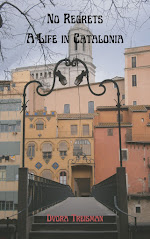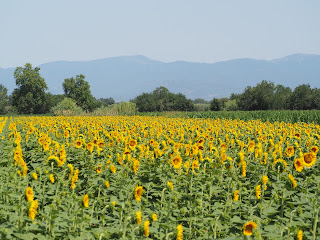It wasn’t until the 29th of May that I saw the first chick. There it was, a little white head. You could hardly see it because the nests are large and high up, and the chicks were small, so if you were lucky you could just see the top of a little head or a black beak. Adult beaks are orange but chicks are born with black beaks that slowly change color until, after a year, they are orange.
 |
| Tending to the nest |
 |
| There's a little white head below Mom if you look closely |
 |
| Two sets of little black beaks being fed |
By June 10 things had developed. The chicks were bigger and you could see them more easily. At this point they were trying out their wings, but they hadn’t fledged yet.
By the 20th of June they were a lot bigger – almost the size of an adult. It was the beak that was still black that gave them away as youngsters. I couldn’t tell if they had fledged yet, but I think not. The nearby horses don't have to learn to fly and were not concerned.
On the 24th, the young storks didn’t seem to have changed much.
On July 4th, there seemed to be a change. At this point you could hardly tell the difference between the fledglings and the adults, especially from the back. The park ranger told me most if not all had fledged, but I didn’t see any of the young ones flying. Even once they start to fly the parents will continue to feed them for a while until they are more capable of flying well and feeding themselves.
 |
| They all look alike from the back |
What I did see was the sure sign of summer. And it’s gotten so hot that I probably won’t go back until the fall by which time the nests will be empty. But that’s OK, there will be a whole new cycle next year.

























Yes the cycle continues and you’ve photographed them beautifully.
ReplyDeleteThanks.
Delete